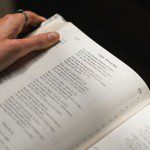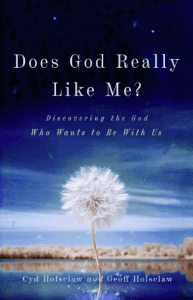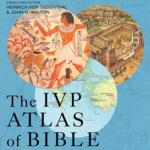John Frye, author of this blog post just came out with a new book: Liberate Your Praying Heart.
The church Julie and I attend, called Tribes Church, Rockford, MI, declares “We aim to love as Jesus loves, and as a result, a mosaic community—race, ethnicity, gender, generation, experience, and class—will exist in our midst in harmony.” Likewise, Sanctuary Covenant Church, North Minneapolis, MN, has a stated purpose: “To grow as a multiethnic, multigenerational community of Christ followers, demonstrating God’s love from North Minneapolis, throughout the city to the whole world.”
Both churches, along with many other diverse Jesus-following communities, intend to be a present incarnation of the future of all God’s people as described in Revelation 7:9-10— “After this I looked, and there before me was a great multitude that no one could count, from every nation, tribe, people and language, standing before the throne and before the Lamb. They were wearing white robes and were holding palm branches in their hands. And they cried out in a loud voice: ‘Salvation belongs to our God, who sits on the throne, and to the Lamb.’”
Both Tribes and Sanctuary have a multiethnic staff.
Dennis R. Edwards, Ph.D., is the lead pastor of Sanctuary Covenant Church and is the author of the 1 Peter. Scot McKnight, on behalf of the New Testament editors of the Story of God Bible Commentary series, writes, “We wanted authors to be exceptional scholars, faithful Christians, committed evangelicals, and theologically diverse, and we wanted to represent the changing face of both American and world evangelicalism: ethnic and gender diversity. I believe this series has a wider diversity of authors than any commentary series in evangelical history” (12). Diversity is permeating evangelical scholarship. I am grateful that Scot invited me to review this new commentary on 1 Peter and I am delighted to learn from a seasoned, active-in-pastoral-ministry scholar. Dennis attended Trinity Evangelical Divinity School and learned Greek and took a class on the Gospels from Scot McKnight. I imagine it is gratifying to Scot to see the student become the teacher of very many through this commentary. In my library, Dennis’ commentary will sit along side Scot’s NIV Application Commentary: 1 Peter. To be complete, I need Karen H. Jobes’ commentary on 1 Peter.
I did not know who Dennis Edwards was. He introduces his ethnicity to his readers like this: “As an African American, I am continually amazed at the endurance of my forebears, many of whom became Christians despite the evils of slavery and American Christianity’s mixed sentiments concerning that institution” (33). The few stories that Dr. Edwards tells early on in his commentary fell into place for me. For example, Dennis recounts the tragic shooting of nine people in the Emmanuel African Methodist Episcopal Church in Charleston, South Carolina, in 2015. He refers to W. E. B. Bu Bois’ book The Souls of Black People. He writes of the courage, grounded in her Christian faith, of Rosa Parks. Dennis taught me about “the dynamic tension” in the music and lyrics of the Negro Spirituals. These stories in his commentary sent a clear signal that Dennis intends to help me, a White pastor, see through fresh and different eyes 1 Peter, a book about first century suffering and hope. We all need diverse perspectives that beat with the same heart for Jesus and his church.
If you are not familiar with the format of The Story of God Bible Commentary series, here is a brief description. Each chapter includes three parts: 1) Listen to the Story. Each Bible text to be commented on is placed within the greater context of the sweeping Story of God in the Bible. 2) Explain the Story. The commentators “explore biblical backgrounds, historical context, cultural codes, and theological interpretations” (12). While not avoiding problematic textual issues and theologically debated views, the authors seek to address those issues with a focus on living out the truth in the passage. 3) Live the Story. “…The Story of God Bible Commentary series [probes] how this text might be lived out today as that story continues to march on in the life of the church” (13). The commentary hopefully “compels us to live in our world so that our own story lines up with the Bible’s Story” (13).
In the next post we will consider the Introduction and Commentary on 1 Peter chapter 1.












